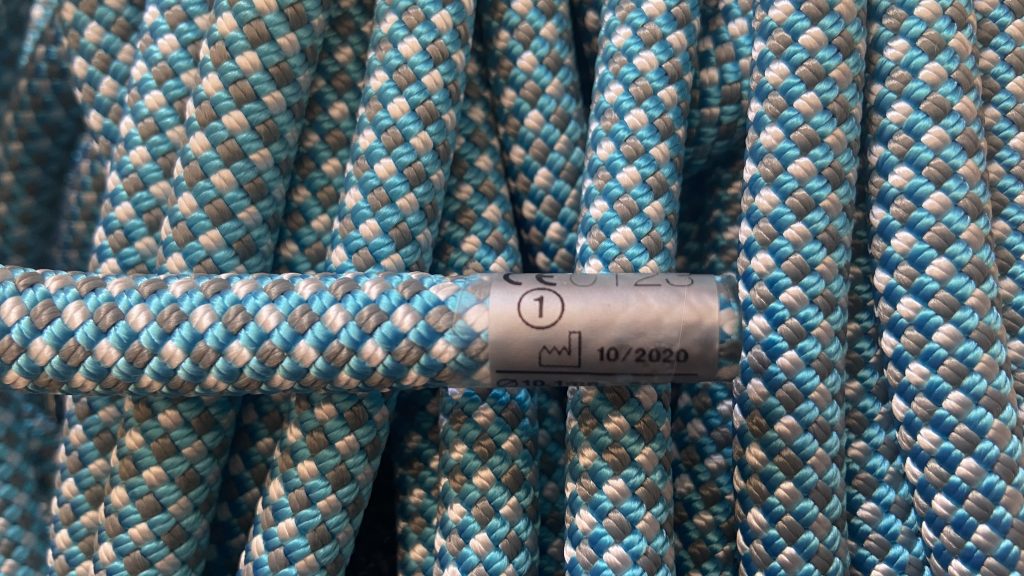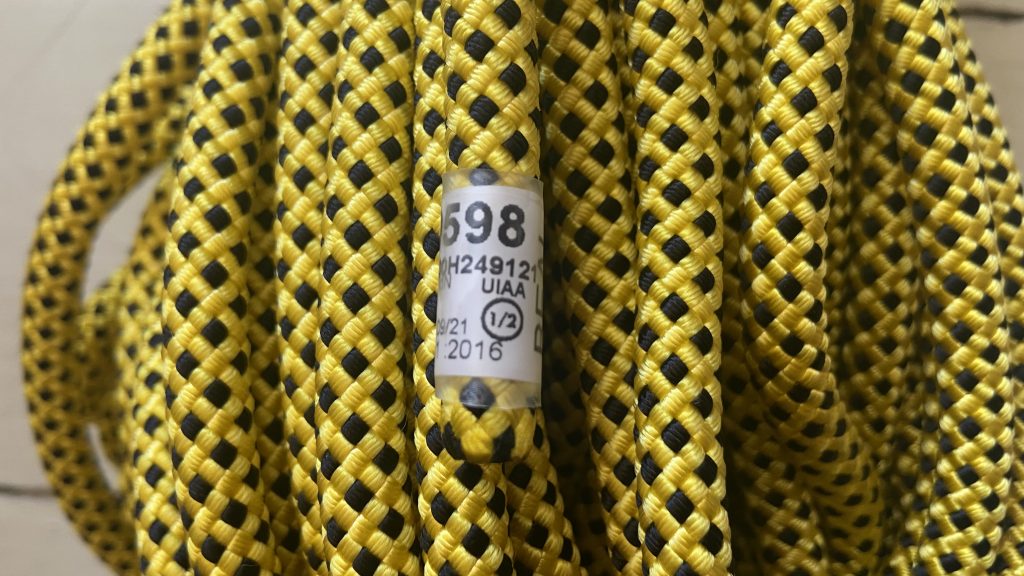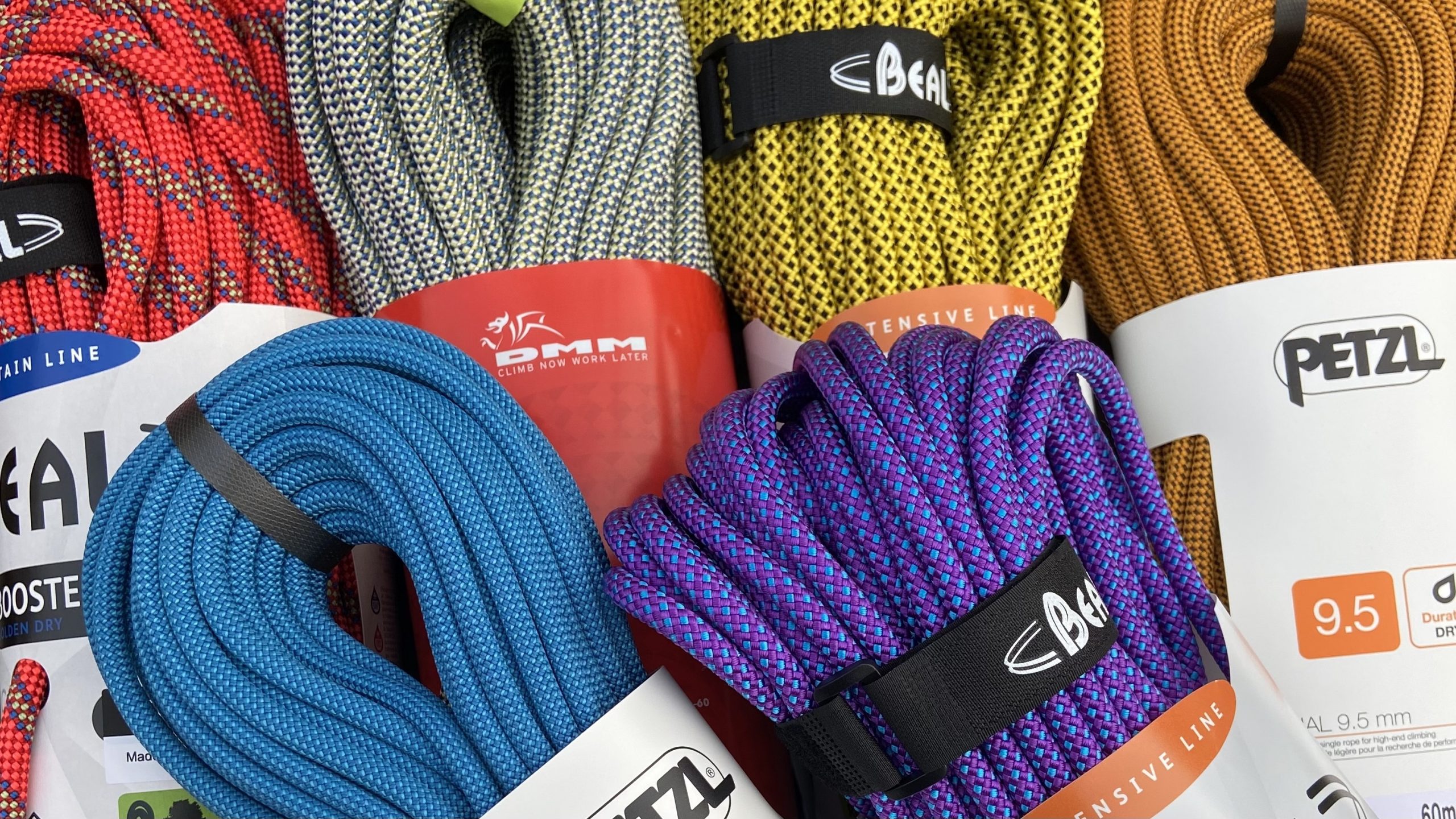Welcome to our guide buying your first climbing rope, where we’ll help you decide which is the best rock climbing rope for you.
We’ve been teaching adventurous folk how to rock climb since 2005 and spent and many more years climbing ourselves for fun! During this time we’ve used numerous different ropes in a variety of situations, so we know our stuff.
It can be tricky to work out what to look for when buying this vital piece of climbing kit and intimidating to ask those in the know! We’re here to make sure you buy the right rope first time with these essential tips.
We’ll cover which type of rope you’ll need, plus look at different rope lengths and diameters. If you’re looking for a more in-depth guide to rope buying, explore our rope features deep-dive blog post for details.
What should I think about first?
The most important consideration when choosing your first climbing rope is what you’ll use it for. You might be building up a rack for your first trad epic or looking for an easily transportable rope to use for top-roping at your local gym/crag.
It’s worth thinking about whether you need one rope that you can use for a range of different types of climbing, or whether you should buy a rope that’s designed for a specific purpose.
Do I need a dynamic or static rope?
There are two main types of rope that rock climbers use – these are called static and dynamic.
Static Rope
Whilst the name is not strictly accurate – all ropes have some stretch in them, so a more correct name would be semi-static or low stretch rope – static rope is mainly used in situations where climbers must ascend or descend the rope over a long distance (such as abseiling) or in rope access and stunt scenarios for rigging rope systems.
Dynamic Rope
Dynamic rope is the type that most climbers use first. It is designed to stretch in a fall to lower the impact force, both on the climber and the anchors holding the rope. As we’re discussing your your first climbing rope, we’ll focus on dynamic climbing ropes for the rest of this guide.
Dynamic climbing ropes divide into three categories
1. Single Ropes
Single ropes are where many climbers start and finish with their choice of ropes. They are simple to use (since there’s only one rope!) and can be used for everything from indoor climbing to long alpine routes. Their diameters range from 8.7–11mm.

Uses
Indoor climbing, sport climbing, top/bottom ropes, single pitch traditional routes and alpine climbing.
Advantages
- Simple to use
Disadvantages
- There is only one rope (two is always going to be safer)
- Risk of rope drag on long or winding routes
- Limited abseil length (only half the length of the rope)
2. Half Ropes
Half Ropes are (confusingly) often called Double Ropes. They are the benchmark for traditional and multi-pitch climbing. Both ropes can be clipped into alternative runners but must be used as a pair of ropes as they are not designed for single rope use. Half Rope diameters range from 7.9–9mm.

Uses
Traditional climbing, multi-pitch climbing, winter climbing and harder alpine routes.
Advantages
- Using two ropes is safer than one
- The climber can make full rope length abseils
- There is less rope drag on long or winding routes
Disadvantages
- You’ll need a higher level of ropes skills to belay with two ropes
- Higher level of rope management skills required at stances
- Heavier overall rope weight
The circled ‘1/2’ symbol on the end of the Beal Verdon indicates it is a half rope
3. Twin Ropes
Do NOT confuse Twin Ropes with half ropes. When using twin ropes, the climber must ensure they clip both ropes into every runner. Twin ropes have an advantage over single ropes, as it unlikely that both ropes will become damaged at the same time. They are mainly used in long mountain routes where there are long run outs, so are less prone to rope drag, but where full length abseils will be required.

Uses
Ice climbs, multi-pitch sport routes and alpine climbs.
Advantages
- Using two ropes is safer than one
- The climber can make full rope length abseils
Disadvantages
- Limited UK application
- There is a possibility that two ropes in one carabiner can place an incorrect load
4. Multi-rated
Sorry, we promised just three types… but there is technically a fourth! This is a multi-rated rope, which is any combination of the three types: single, half and twin.
Manufacturers make these ropes to meet the standards of multiple classifications of dynamic rope. For example, the Beal Joker is classified as all three.
What to consider next?
Once you have decided on either single, half, or twin ropes, you’ll need to decide on the rope length and diameter, before looking at additional features.
Rope Length
If you are only ever going to be climbing on the Southern Sandstone, then you would want to choose a 30m rope. For trad climbing in the UK, then you would need a minimum of 50m, or you may opt for additional security with a 60m rope. If travelling abroad for sport climbing is your thing, then you would be better off choosing a 60m or 70m rope
Rope Diameter
The diameter of the rope will affect the weight and the durability of the rope. If you are pushing performance, then choosing the lightest, thinnest rope possible would be beneficial. However, there is generally a trade off with the number of falls and the wear and tear a thin rope can handle, in comparison to a thicker rope.
Additional rope features to consider
So, you’ve decided on single, half, or twin ropes plus you’ve got an ideal rope length and diameter in mind – awesome!
All climbing ropes sold in the EU – like those sold in the Hatt Adventures shop – must meet stringent safety requirements and standards. Paying more for a rope won’t necessarily mean you’re getting a stronger or safer rope, but it may have other important features associated with it, such as dry treatment, abrasion resistance and better handling.
Depending on what you’ll be using your rope for, you might factor some of these features into your decision-making and you can brush up on your knowledge of these in our climbing rope features blog post.
Where should I buy my rope?
You’ve got loads of climbing adventures planned for the year and you’ve decided what climbing rope you want – now it’s time to buy it. Visit the Hatt Adventures shop to choose from our huge range of climbing ropes.
For more expert advice on climbing equipment, contact our team of friendly climbing fanatics!
